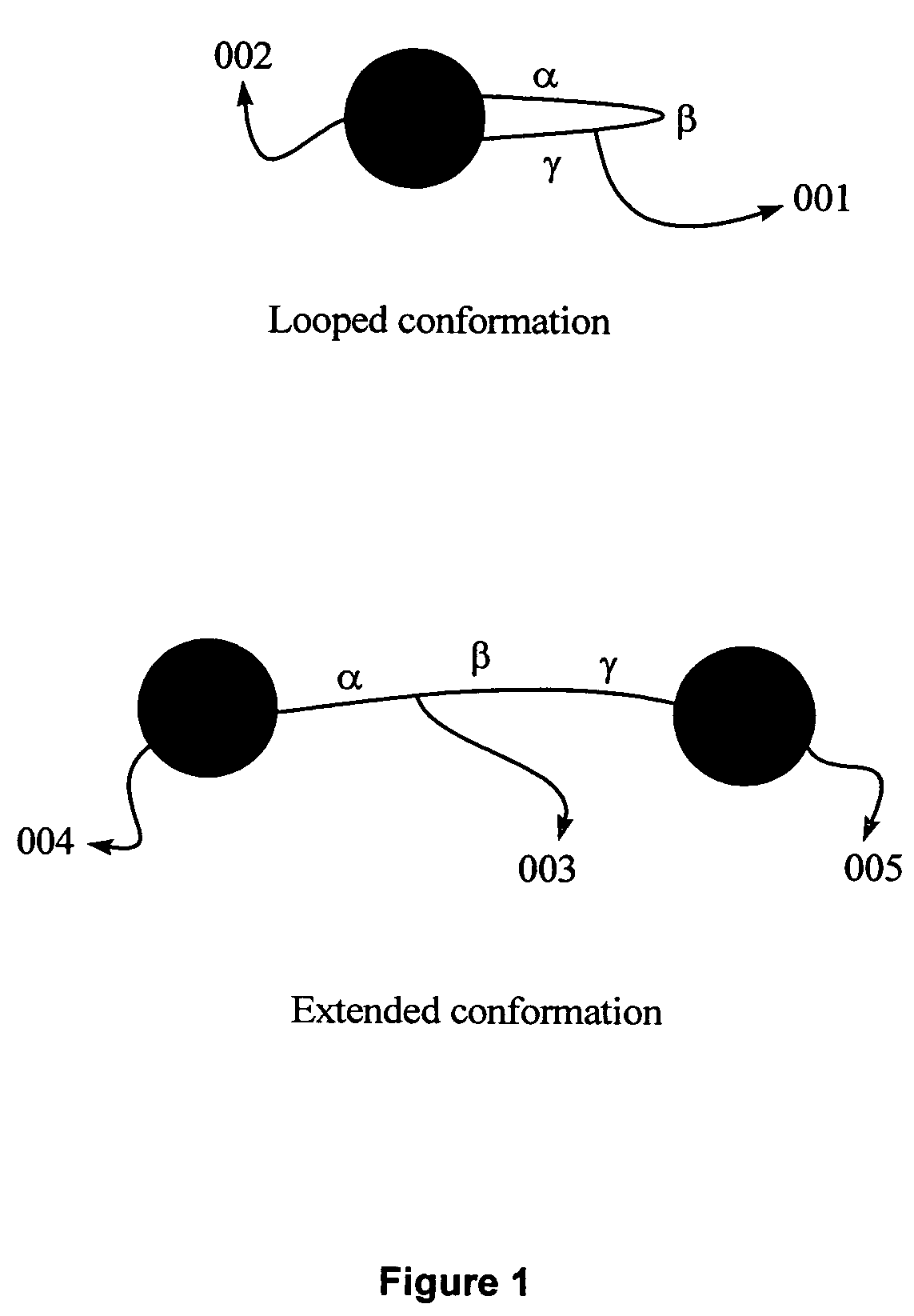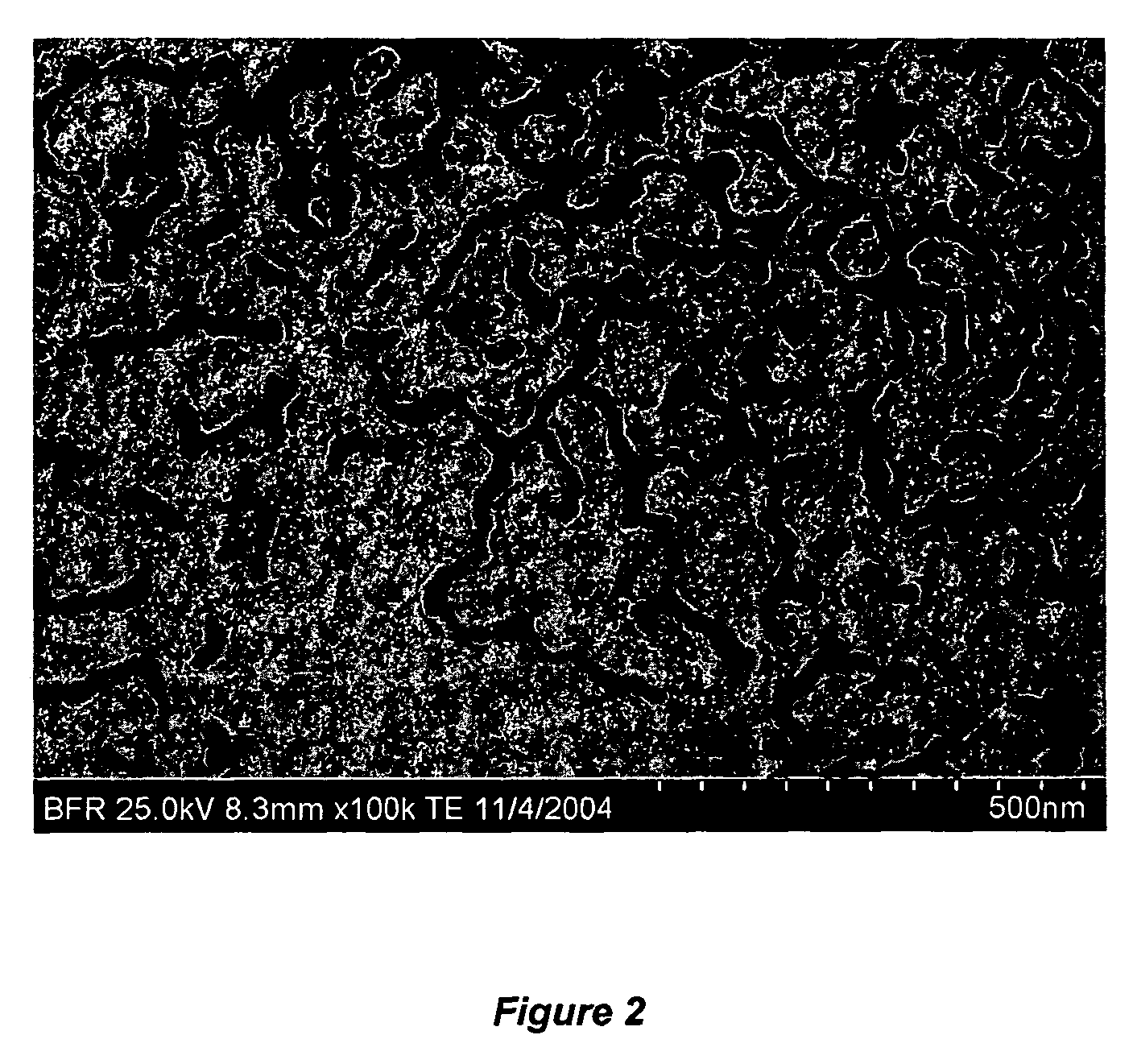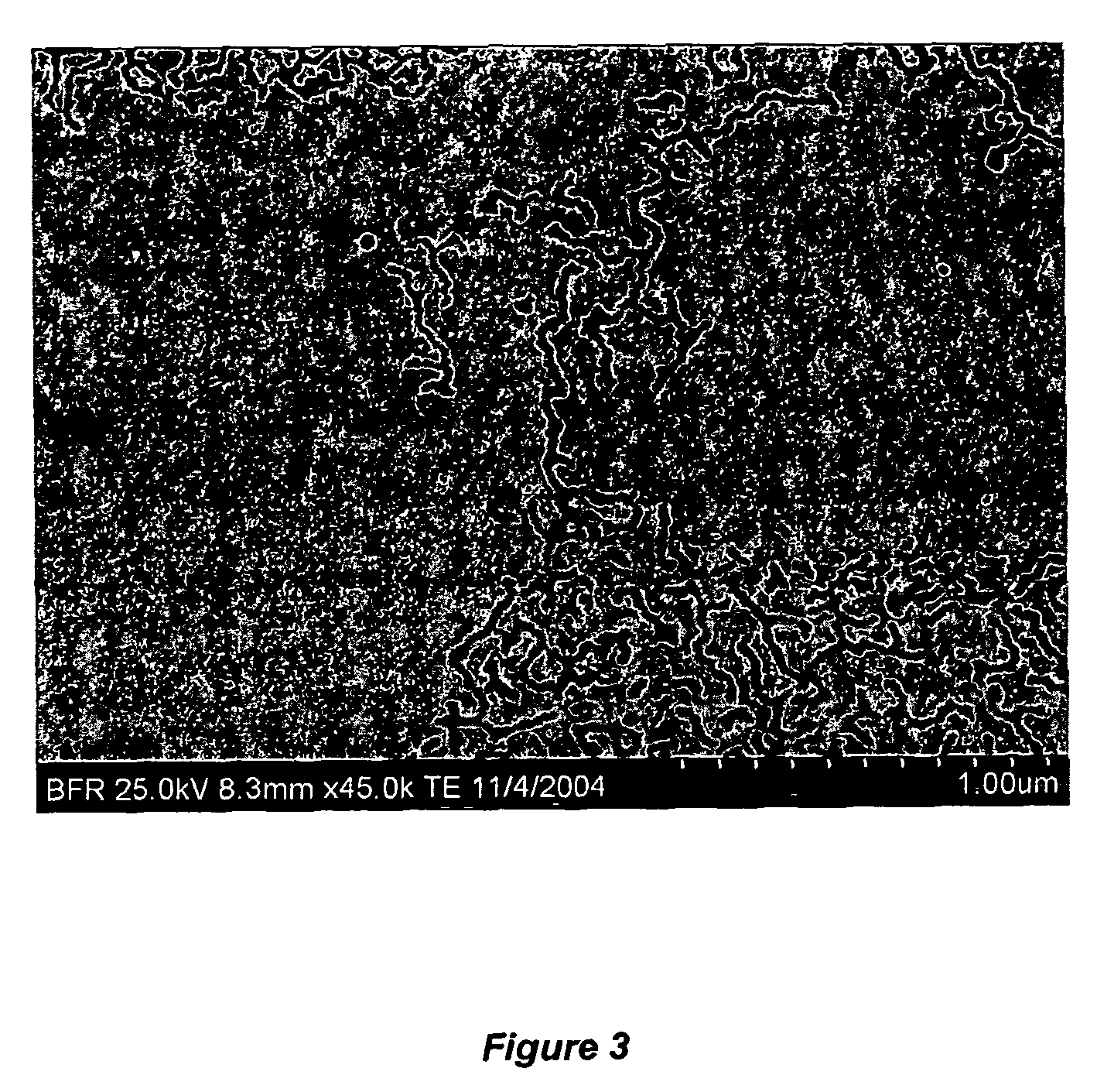Non-spherical nanoparticles made from living triblock polymer chains
a polymer chain and nanoparticle technology, applied in the field of polymer nanoparticles, can solve the problems of unwelcome constraints in industrial processes, inability to provide high flexibility in concentration variations, and degradation of matrix rubber materials
- Summary
- Abstract
- Description
- Claims
- Application Information
AI Technical Summary
Benefits of technology
Problems solved by technology
Method used
Image
Examples
example 1
[0115]The reactor was charged with 4 lbs. hexane and 0.373 lbs. isoprene (IP). The jacket of the reactor was heated to 135° F. When the batch reached 135° F., 15 ml of 0.5 M di-lithium solution was added. After 2 hours, 1.5 lb. styrene / hexane blend (containing 33 wt % styrene) was added to the reactor which was maintained at 135° F. An exothermic peak was observed after 20 minutes. After 2 hours, 50 ml divinyl-benzene (DVB) was charged into the solution. The solution was allowed to react for an additional 2 hours, and then the reaction mixture was dropped into an isopropanol / acetone solution containing BHT (about 500 mL / 2L). The solid was then filtered through a cheese-cloth and dried in vacuum. The product could be dissolved in a number of solvents, such as THF, toluene, and hexane. Those solutions were usually thick and gel-like, indicating that the synthesized polymer might have supra-architectures.
[0116]GPC analysis of the intermediate product, based on a polystyrene / THF standar...
example 2
[0117]In Example 2, the size of the isoprene block of the triblock polymers was decreased from a target Mn of 25K to 14K. The reactor was charged with 4 lbs. hexane and 0.229 lbs. isoprene. The jacket of the reactor was heated to 135° F. When the batch reached 135° F., 15 ml of 0.5 M di-lithium solution was added. After 2 hours, 1.5 lbs. styrene / Hexane blend (containing 33 wt % styrene) was added to the reactor which was maintained at 135° F. An exothermic peak was observed after 20 minutes. After 1.5 hours, the color of the solution was yellow. 50 ml divinyl benzene (DVB) was then charged into the solution. After about 7 minutes, the agitation was stopped. The solution was allowed to react for an additional 1.5 hours; the reaction mixture was then dropped into an isopropanol / acetone solution containing BHT (about 500 mL / 2L). The solid was then filtered through a cheese-cloth and dried in vacuum.
[0118]GPC analysis of the intermediate product, based on a polystyrene / THF standard, ind...
example 3
[0119]In Example 3, the size of the isoprene block of the triblock polymers was further decreased from a target Mn of 14K to 9K, and the nano-assembly of polymer chains changed to spherical particles with flower-like inner structures. The reactor was charged with 2 lbs. hexane and 0.195 lbs. isoprene. The jacket of the reactor was heated to 135° F. When the batch reached 135° F., 15 ml of 0.5 M di-lithium solution were added. After 2 hours, 1.5 lb. styrene / Hexane blend (containing 33 wt % styrene) were added to the reactor which was maintained at 135° F. An exothermic peak was observed after 20 minutes. After 2 hours, the color of solution was orange. 50 ml divnyl benzene (DVB) was then charged into the solution. The solution was allowed to react for an additional 2.5 hours. The reaction mixture was then dropped in an isopropanol / acetone solution containing BHT (about 500 mL / 2 L). The solid was then filtered through cheesecloth and dried in vacuum.
[0120]GPC analysis of the intermedi...
PUM
| Property | Measurement | Unit |
|---|---|---|
| Δ | aaaaa | aaaaa |
| Δ | aaaaa | aaaaa |
| Δ | aaaaa | aaaaa |
Abstract
Description
Claims
Application Information
 Login to View More
Login to View More - R&D
- Intellectual Property
- Life Sciences
- Materials
- Tech Scout
- Unparalleled Data Quality
- Higher Quality Content
- 60% Fewer Hallucinations
Browse by: Latest US Patents, China's latest patents, Technical Efficacy Thesaurus, Application Domain, Technology Topic, Popular Technical Reports.
© 2025 PatSnap. All rights reserved.Legal|Privacy policy|Modern Slavery Act Transparency Statement|Sitemap|About US| Contact US: help@patsnap.com



